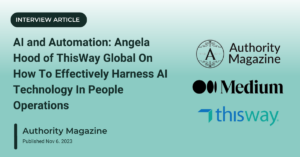On average, a corporate job posting will attract 250 applicants, but as millions of Americans are left without work, post-COVID-19 corporations are suddenly receiving thousands per job listing. It can be incredibly challenging to weed through such large numbers of applicants to select just a handful of candidates for the next step of the interview process. But, this is a crucial step, as poor employee selection can have serious consequences. Companies estimate that on average they lose $1,400 per bad hire.
Recruiters are expected to pick out the great candidates from the sea of applicants, recommending only 4-6 applicants for the next stage of interviews. One of the best ways to wittle the list of candidates down is with an extensive pre-interview process.
What is the Pre-Interview Process?
The pre-interview process includes the screening interview.
After reviewing all the applications, a recruiter may proceed with a screening interview with 10-20 candidates. And from those 10-20 candidates, typically only 4-6 are moved along to the extensive interview stage with the client or HR manager.
This pre-interview process is meant to find out more about the candidate, information that isn’t covered in the resume. Some of the things that may be covered include aspirations and goals, the reason for looking for a new job, and salary expectations. A recruiter never wants to waste a client or hiring manager’s time. With the right pre-interview process, candidates that aren’t a cultural or suitable fit for the position will quickly be identified.
A pre-interview is usually scheduled as a phone or video interview.
Keep reading for our proven three-step process for a better pre-interview process.
Step One: Communicate with the Client/Hiring Manager
The first step is to fully understand what the client or hiring manager wants in a candidate beyond what is stated in the job description. Management often has very specific characteristics they prefer in a candidate for a role that they don’t put in the job posting.
Sit down with management and cover more in-depth what the ideal candidate looks like. If you’re not fully aware of the company’s culture, make sure you discuss it, so your candidates align well with the organization. Some businesses are more social and collaborative in the workplace. You will want to communicate that with candidates for the sake of the candidate and the company. This is vital information an employee will want to know in case they are extremely introverted or struggle with social anxiety. A wrong culture fit will only lead to turnover, as the employee will likely have low job satisfaction.
You will also want to ask about the direct supervisor for the open job. It can be useful to ask the manager their management style and what personality traits they look for in their employees. This will help you to make a good match, so the new employee works well with their boss.
Lastly, management and the position’s boss may have some insights into the job role that you weren’t aware of. For example, it may not be clear that the role requires a lot of repetitive tasks, so an over-achiever may find the role boring. Or that the position is highly autonomous, requiring a candidate that is a great self-starter. These are valuable insights management can provide so you can bring in more qualified candidates.
Step Two: Screen Employees Online
After finding some possible candidates, you will want to do some screening online. First, start with LinkedIn. Approximately 51% of resumes contain inaccuracies about employment, job performance, and educational achievement. You can use LinkedIn to verify that the details for the resume match their LinkedIn profile. You’ll be surprised just how many people you’ll find with discrepancies!
LinkedIn also has a ‘references’ section for people’s profiles. You can review these references to see if there’s any valuable information in there about the candidate.
After a LinkedIn check, it is useful to conduct a general online check on your candidates. If you find past news stories or questionable content online from the candidate, you may choose to remove them from the list of possible candidates.
Step Three: Good Interview Questions
This is the most crucial part of preparing for a better pre-interview process. Good interview questions are the key to an efficient screening interview. If you ask the right questions, it can also lend to a more pleasant interview process for the candidate. Approximately 83% of professionals say a negative interview experience can change their minds about a role. A thought-out, comprehensive list of questions will make you look professional and leave the candidate feeling confident about the process, too.
Questions can be grouped into three main categories: background, culture fit, and career expectations. Some examples of questions to ask during a phone interview:
- Background
- What do you do outside of work?
- What are your biggest strengths and weaknesses?
- What is a problem you had to solve in your previous position?
- How would you describe your working style?
- Cultural Expectations and Fit
- How do you like to be managed?
- What qualities do you look for in a manager?
- How do you deal with conflict?
- What motivates you at work?
- What did you like about your previous company’s culture and what did you not like?
- How do you want to be managed?
- What qualities do you look for in a manager?
- How do you deal with conflict?
- Career Aspirations/Expectations
- Where do you see yourself in 5 years?
- What is your ideal next position/title after this current job?
- Are you comfortable traveling for work?
- What appealed to you about this position and this company?
- What challenges do you see in this role?
The Right Pre-Interview Process Saves Time
A pre-interview doesn’t have to be long; it often lasts 15 minutes per candidate. Recruiters should take notes during the interview so they can review and compare all candidates after all the screening is done. If performed correctly, the pre-interview process can save a lot of time for the hiring manager or the client. This screening process quickly weeds out candidates that won’t be interested in the role or won’t be a good fit. It’s also a win for the candidates, who aren’t being called in for lengthy in-person interviews that they were never a good fit for. Start focusing on your pre-interviews for more effective hiring practices.









